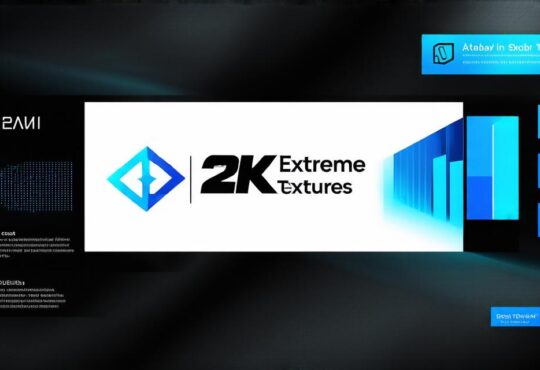
Creating Your Own Blockchain: A Step-by-Step Guide
Blockchain technology is gaining immense popularity worldwide due to its decentralized and secure nature. The blockchain is a digital ledger that records transactions in a way that makes them transparent, tamper-proof, and secure. With the growing interest in blockchain technology, many people are now looking to create their own blockchain networks. In this article, we will explore the steps involved in creating your own blockchain and how to do it effectively.
Step 1: Understanding Blockchain Technology
Before diving into the process of creating a blockchain, it is important to understand the basics of blockchain technology. A blockchain is a distributed ledger that records transactions in a way that makes them transparent and secure. Each block in a blockchain contains a unique identifier called a hash, which links the block to the previous one. The blocks are stored in a network, with each node in the network having a copy of the entire blockchain.
The decentralized nature of blockchain technology is what makes it so secure and trustworthy. Since there is no central authority controlling the network, it is extremely difficult for anyone to manipulate or tamper with the ledger.
This makes blockchain technology ideal for applications such as cryptocurrency, supply chain management, and voting systems.
Step 2: Choose Your Blockchain Platform
Once you have a basic understanding of blockchain technology, the next step is to choose your blockchain platform. There are several blockchain platforms available, each with its own unique features and capabilities. Some popular blockchain platforms include Ethereum, Hyperledger, and Corda.
When choosing your blockchain platform, consider the following factors:
- Scalability: How well the platform can handle an increasing number of transactions and users.
- Security: The level of security provided by the platform, including its ability to prevent attacks and maintain data integrity.
- Flexibility: The flexibility of the platform in terms of smart contract development and deployment.
- Community Support: The level of support available from the platform’s community, including developers, users, and other stakeholders.
Step 3: Define Your Blockchain Architecture
Once you have chosen your blockchain platform, the next step is to define your blockchain architecture. This involves deciding on the structure and design of your blockchain network, including the number of nodes, consensus mechanism, and smart contract development.
Step 4: Develop Your Smart Contracts
Smart contracts are self-executing programs that run on the blockchain and automate the execution of certain tasks based on predefined conditions. When creating your own blockchain, you will need to develop smart contracts to define the rules and logic for your network.
Smart contract development involves using a programming language such as Solidity or Vyper to write code that interacts with the blockchain. You can use libraries and frameworks to simplify the process of smart contract development, or you can build your own from scratch.
When developing your smart contracts, it is important to keep in mind best practices for secure and reliable coding. This includes using secure coding techniques, testing your code thoroughly, and following established security guidelines.
Step 5: Deploy Your Blockchain Network
Once you have developed your smart contracts and defined your blockchain architecture, the next step is to deploy your blockchain network. This involves setting up the necessary infrastructure, including nodes, mining equipment, and other resources needed to run the network.
Deployment of a blockchain network can be complex, especially if you are working with a large number of nodes or a distributed network. It is important to plan carefully and test thoroughly before deploying your network to ensure that it works as expected.
Step 6: Secure Your Blockchain Network
Security is a critical consideration when creating your own blockchain. Since the blockchain stores sensitive data, it is essential to ensure that your network is secure from attacks and other security threats.
Some best practices for securing your blockchain network include:
- Using strong encryption algorithms to protect data at rest and in transit.
- Implementing access controls to restrict access to sensitive information.
- Regularly updating software and firmware to patch known vulnerabilities.
- Conducting regular security audits and penetration testing to identify and address potential weaknesses in the network.
Case Study: Creating a Blockchain-Based Supply Chain Management System
Supply chain management is an area where blockchain technology can provide significant benefits, including increased transparency, improved traceability, and reduced fraud. In this case study, we will explore how one company used blockchain technology to create a supply chain management system for their products.
The company in question was a manufacturer of high-end watches. They wanted to create a system that would allow them to track the movement of their products from the factory to the end consumer, providing greater transparency and accountability throughout the supply chain.
To create their blockchain-based supply chain management system, the company chose the Ethereum platform and developed smart contracts that defined the rules and logic for their network. They also established a permissioned network with private channels for sharing sensitive information, ensuring that only authorized parties had access to the data.
The system allowed the company to track the movement of their products in real-time, from the factory to the end consumer. This provided greater transparency and accountability, as consumers could easily verify the origin and authenticity of their watches. The system also reduced fraud, as it was much harder for counterfeiters to create fake products that could pass through the supply chain undetected.
The company’s blockchain-based supply chain management system was a great success, providing significant benefits to both the company and its customers. It demonstrated the potential of blockchain technology to revolutionize supply chain management and improve transparency and accountability throughout the entire process.
FAQs
What is the difference between public and private blockchains?
Public blockchains are open networks that anyone can join, while private blockchains are restricted to a specific group of participants. Public blockchains tend to be more secure but less scalable, while private blockchains are more scalable but less secure.
What is the role of smart contracts in a blockchain network?
Smart contracts are self-executing programs that run on the blockchain and automate the execution of certain tasks based on predefined conditions. They can be used to define rules, enforce policies, and facilitate transactions between parties on the blockchain.
How do I secure my blockchain network?
To secure your blockchain network, you should use strong encryption algorithms, implement access controls, regularly update software and firmware, and conduct regular security audits and penetration testing to identify and address potential weaknesses in the network.
What is the future of blockchain technology?
Blockchain technology has the potential to revolutionize a wide range of industries, including finance, healthcare, supply chain management, and more. As the technology continues to evolve and mature, we can expect to see even more innovative uses of blockchain in the coming years.




